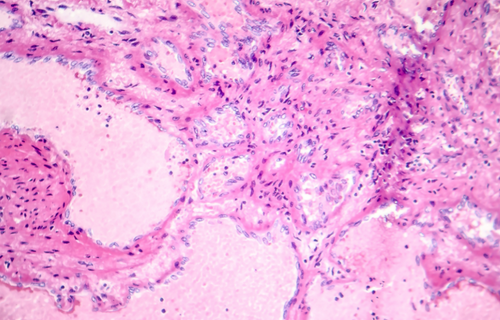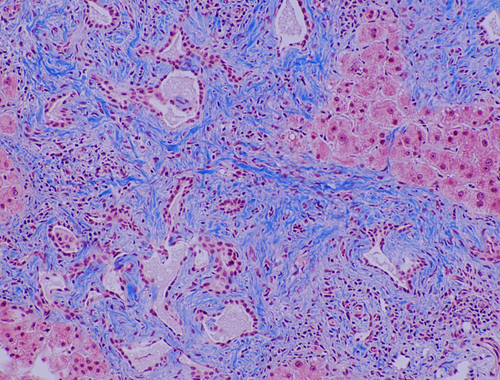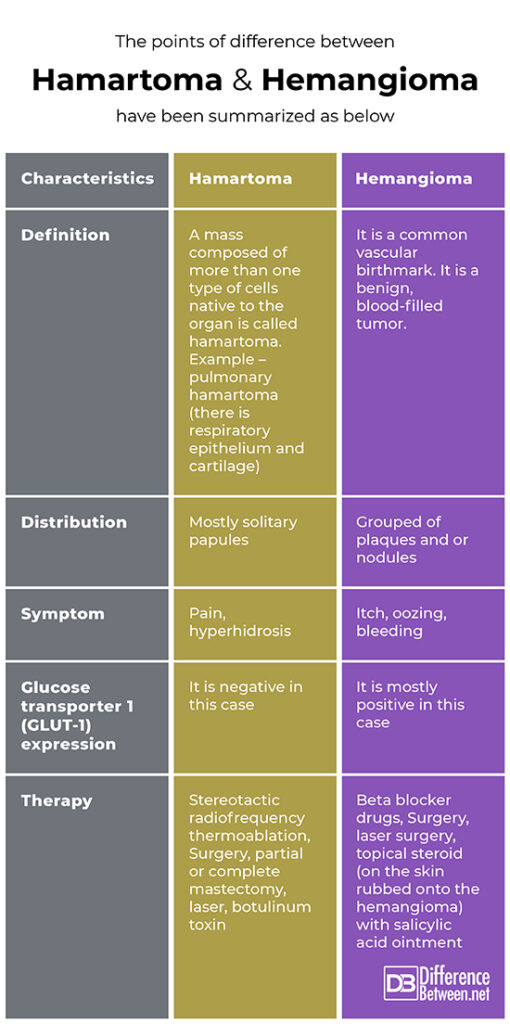Difference Between Hamartoma and Hemangioma

What is hamartoma and hemangioma?
Hemangiomas are hamartomas made of vascular tissue that are big a birth and need no treatment unless they are any risk to facial structures. Because of limited development and growth, hamartomas (a benign (noncancerous) tumor like malformation) are not true tumors because they do not spread to other areas and some, such as hemangiomas (a congenital, benign tumor of endothelial cells) that occur as colored marks on the skin that are present at birth, may vanish with time.

Similarity
Location for both is distal extremities.
Hamartoma
It consists of haphazardly organized mature cells and tissues, mostly of masses of hyaline cartilage with a myxoid connective tissue, adipose cells, smooth muscle cells, and clefts lined with respiratory with epithelium.
Hamartomas can be easily enucleated (surgically remove a gland, or the eyeball, intact from its surrounding capsule, but wedge resection (surgery to remove a triangle-shaped slice of tissue) is also appropriate.
Hemangioma
A hemangioma is a benign vascular birthmark, blood-filled tumor. The exact cause of hemangioma is not really known. Hemangiomas are typically not genetic or inherited, but others in the family may also have had them.
Difference between hamartoma and hemangioma
Definition
Hamartoma
Hamartomas are disorganized masses of cells composed of cells native to that site.
Hemangioma
A hemangioma is a usually benign vascular tumor or common vascular birthmark derived from blood vessel cell types.
Onset
Hamartoma
Congentital or later in the childhood
Hemangioma
Congenital or in early infancy
Symptoms
Hamartoma
- Gelastic seizures
- Early menstruation in girls
- No thirst or extreme thirst
- Delays in motor development, problems with balance and coordination
- Poor social skills
- Mature reproductive organs, enlargement of penis in boys
- Pain
- Problems with concentration, memory and learning
Hemangioma
- A red to reddish-purple, raised growth on the skin
- Bloated stomach
- Fullness or lack of appetite
- Nausea
- Feeling full after eating only a small amount of food (early satiety)
Causes
Hamartoma
A hamartoma is a noncancerous tumor (benign tumor) made of an abnormal mixture of normal tissues and cells from the area in which it grows.
Hemangioma
Hemangioma are triggered by blood vessels that do not develop properly. The direct cause is not known. In children, the research says that hemangiomas happens because the blood vessels do not form correctly during pregnancy.
Histopathology
Hamartoma
Eccrine sweat glands (the major sweat glands of the human body) associated with thin-walled aggregated vessels in the middle and lower dermis.
Hemangioma
Hyperkeratosis (increased thickness of the stratum corneum), acanthosis (a skin condition that causes a dark discoloration in body) and papillomatosis (the projection of dermal papillae above the surface of the skin) in epidermis, vascular component in dermis, and subcutaneous tissue.
Dermoscopy
Hamartoma
A spitzoid pattern or a popcorn pattern.
Hemangioma
Bluish-white hue (hyperkeratosis), reddish blue or bluish lacunae.
GLUT-1 expression
Hamartoma
It is negative
Hemangioma
It is mostly positive
Therapy
Hamartoma
Surgery, laser, botulinum toxin
Hemangioma
Surgery, laser, topical steroid with salicylic acid ointment
Summary
The points of difference between Hamartoma and Hemangioma have been summarized as below:

FAQ
What is a hamartoma?
A hamartoma is a non-cancerous (benign) tumor made of an abnormal mixture (congenital malformations) of usual tissues and cells from the region in which it grows.
What is the difference between hamartoma and neoplasm?
The line of demarcation (distinction) between hamartomas and benign neoplasms (a type of abnormal and excessive growth of tissue) is often unclear, since both lesions (any damage or abnormal change in the tissue of an organism) can be clonal. A hamartoma, however, different to a neoplasm, shows a self-limited growth.
Is a hamartoma benign?
A hamartoma is a local deformity comprising of an unusual and uncommon mixture of cells and tissue. Although most hamartomas (local malformation made up of an abnormal mixture of cells and tissue) are benign, they cause morbidity (the rate of disease in a population) by various mechanisms such as; infection, infarction (tissue death or necrosis due to inadequate blood supply), pressure/obstruction, hemorrhage/anemia (a disorder in which red blood cells are destroyed faster than they can be made) fracture, neoplastic transformation.
Is a hamartoma malignant?
A hamartoma is non-malignant (noncancerous) tumorlike malformation comprising of an abnormal amalgam of cells and tissues located in regions of the body where growth occurs.
Is hemangioma a hamartoma?
Yes, hemangiomas are hamartomas made of vascular tissue that look big at birth but are usually left without treatment unless they are a risk to facial structures.
What causes a hamartoma?
The primary cause of hamartoma is trauma. This trauma can be triggered by an accident, injury of bones, head accident or injury, wound caused by a gunshot. Hamartoma is also caused by Aneurysm (bulge in a blood vessel is triggered due to a weakness in the blood vessel wall, mainly where it branches).
- Difference Between Global Warming and Greenhouse Effect - May 18, 2024
- Difference Between Vaccination and Immunization - March 3, 2024
- Difference Between Selective Mutism and Autism - February 25, 2024
Search DifferenceBetween.net :
Leave a Response
References :
[0]Cheung, D. S., Warman, M. L., & Mulliken, J. B. (1997). Hemangioma in twins. Annals of Plastic Surgery, 38(3), 269-274.
[1]Cosio, B. G., Villena, V., Echave-Sustaeta, J., de Miguel, E., Alfaro, J., Hernandez, L., & Sotelo, T. (2002). Endobronchial hamartoma. Chest, 122(1), 202-205.
[2]Gontijo, B., Silva, C. M. R., & Pereira, L. B. (2003). Hemangioma of infancy. Anais Brasileiros de Dermatologia, 78, 651-673.
[3]Hobert, J. A., & Eng, C. (2009). PTEN hamartoma tumor syndrome: an overview. Genetics in Medicine, 11(10), 687-694.
[4]Scrivener, Y., Petiau, P., Rodier‐Bruant, C., Cribier, B., Heid, E., & Grosshans, E. (1998). Perianal striated muscle hamartoma associated with hemangioma. Pediatric dermatology, 15(4), 274-276.
